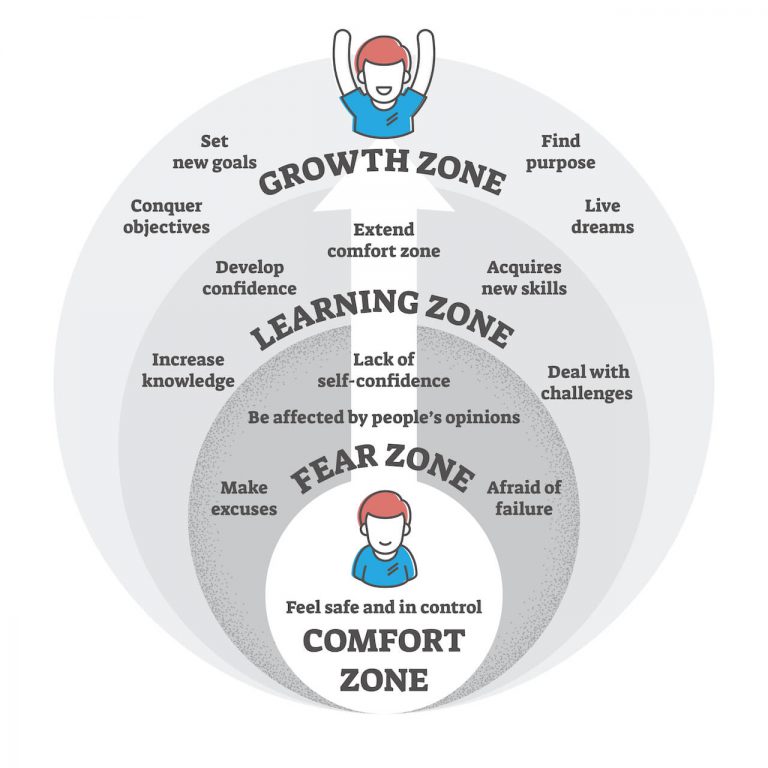What Are Logical Fallacies In The Media?
What is a logical fallacy?
It used to be that our news came solely from newspapers or reputable news sources. These days, everyone has a voice on social media and can share information at a button. This constant stream of information makes it challenging to check reliability. It means we regularly read false information without the opportunity to check if it is wrong.
Twitter has a limited number of characters for each post. As such, there is rarely room for both sides of a discussion. This encourages people to post on social media without first critically analyzing their points. The more this has happened, the worse our critical thinking has become.
How to notice fallacies
We have become used to absorbing information at such a speed that we accept what we read. Because there are so many voices on social media, it has become more difficult to spot false information.
There is also a lot of information online that is correct but includes no evidence. Therefore, we have become used to not fact-checking information rigorously or reflecting on its reliability. Unfortunately, this has made it easier for people to spread misinformation purposefully.
Along with this, people use several logical fallacies to undermine an argument. These tactics rely on our inability to look for evidence while reading information.
Examples of logical fallacies on social media
Ad Hominem (against the man)
The ad hominem fallacy occurs when someone doesn’t have an excellent response to an argument. Instead, they try to take cheap shots at the person saying it and aim to discredit them. Information can just be dismissed because of who is saying it and whether it is correct.
This fallacy is often found on social media and in comment sections. For example, “You can’t even spell, so your argument is wrong”. Comments like this distract people from the actual argument and make their opponent appear unreliable.
The problem is that the person could have reported accurate information but was shut down. This stops people from having a proper discussion. Thus, it is a lazy way to win an argument. Generally, the opposition doesn’t have a good argument in these instances. So, they use this tactic to discredit rather than discuss the argument.
Post Hoc, Ergo Proptec Hoc
This fallacy is related to people incorrectly assigning cause and effect due to correlation. Just because two things happen simultaneously does not mean they are related. For example, you drink a glass of water and then vomit. You might say that the water made you sick. The likelihood is that the sickness was due to another factor. But, because of the timing, it was blamed on the water.
The correlation fallacy is widespread in the media, especially relating to Covid vaccinations. Many people have claimed things such as “the vaccine gave me an autoimmune disorder”. The autoimmune disorder may have appeared following the vaccine but is almost certainly not related. Neither the vaccine nor the disease is capable of causing this kind of illness.
But because the events occurred together, people believe they are related. This can be incredibly detrimental to the safety of society, particularly in this case. These fallacies can prevent people from receiving important vaccinations due to fear of the consequences.
Straw Man
Using the straw man fallacy, a person can weaken their opponent’s argument and make it easy to blow over. (Like a straw man compared to a real man). Likely the person using this fallacy does not have a good argument. So, they will misrepresent the argument to make refuting it easier.
For example, “feminists hate all men, so we shouldn’t listen to their ideas”. Of course, feminists don’t hate all men, but it is easy rhetoric to run with. Feminists may discuss crimes against women caused by men. Therefore, this had a basis in truth but was exaggerated to discredit the entire movement.
This can then lead to “Not all men rape; stop accusing us all”. The original issue has been ignored, but the opponent is now making feminists the enemy. Using this fallacy, opponents can shut down an entire argument without exploring the ideas.
Reforming the argument makes it easier to encourage people to agree with your point of view without showing them both sides. Another example is the gun laws in the States:
“My opponent wants harsher gun regulations because they want to take our right to bear arms.”
“My opponent doesn’t want to amend gun regulations, so they condone school shootings.”
Both sides of the argument have valid points to discuss. But by exaggerating and misrepresenting their opponent’s argument, they don’t allow for a discussion to take place. In all likelihood, a middle ground would benefit both sides. However, each side wants to refute the other without hearing the whole argument.
Slippery Slope
This is an unrealistic demonstration of the consequences that can follow from a certain action. The person using this fallacy will start with a reasonable point. However, they then make leaps to prove that the overall outcome will be awful. For example, people have done this when discussing Covid vaccinations.
“Mandatory vaccines lead to microchips, which lead to segregation of the un-vaxxed. That will start vaccination apartheid and lead to a fascist state. They’ll put us in concentration camps next.”
This argument is wildly unreasonable and almost certainly untrue. It can scare people into agreeing with their point of view by constructing the worst possible consequence. Similar arguments have been made to convince people that vaccines are unsafe. In reality, vaccines keep us safe and protected from the virus, not to control and separate.
Godwin’s Law
This states that the longer an online discussion goes on, the higher the chance that Hitler will be mentioned. It is a lazy tactic that creates the scariest outcome without exploring other possibilities.
False Dichotomy
People will use the false dichotomy fallacy to provide two extreme sides to an argument. However, they will often present their side of the argument as very reasonable, while the other is extreme and awful.
This doesn’t give people the opportunity to make an informed decision. Instead, it forces people into thinking that your argument is the only rational one. Often, there is an alternative or a middle ground that has been ignored.
For example, “Covid vaccines don’t stop the infection, so don’t bother taking it at all”. The argument here tries to suggest the vaccine is useless. In reality, the vaccine improves people’s symptoms when infected, reduces the time of infection, and prevents death. But rather than exploring this, the argument tries to prevent people from taking the vaccine.
This fallacy has also often been used in political rallies to discredit opponents. “If you vote for this candidate, you are supporting racists”. Statements like this bully the audience into agreeing. If they had a strong argument, they would not need to use this tactic. They would refute their opponent with valid points rather than exaggerations.
A good argument would be to make your opponent’s views as strong as possible, then refute this. In this case, a strong enough argument would stand without misrepresenting the opponent.
Generalizability
This logical fallacy relates to applying something to scenarios that cannot be compared. It is an oversimplification that is often used in marketing.
For example, a skincare product endorsed by a celebrity might work effectively for them. However, if you were to use the same product, it may not have the same effect. This is because the celebrity has a different lifestyle and different skincare needs.
The outcome does not represent the entire population but is marketed to suggest that it does. It is essential to be critical in such examples rather than simply believing generalized statements.
Assuming Motivations
It is easy on social media to spread misinformation relating to people’s intentions. We can’t read people’s minds and cannot assume we know their motivations unless they explicitly tell us. This is often used to make false claims against political actions.
For example, “the government is making us go into lockdown so they can control us”. Or, “Bill Gates only funded a vaccine so he could put microchips in us”. These are two arguments that regularly appear on social media that assume the motivations of others.
People can use logical fallacies on social media to misrepresent someone as malicious and untrustworthy. Without this idea coming directly from the person themself, there is no way to be certain of their motivations.
Downsides
Any idea will have positive and negative aspects. But often, people will reject an idea if it has any downsides at all. Unfortunately, this can also be used to quickly dismiss an idea without taking the time to consider it. However, a critical thinker will weigh up both sides of the argument.
For example, there are ongoing discussions relating to police brutality and racism. In addition, there are discussions around defunding the police. Also, there are numerous protests taking place to promote the Black Lives Matter movement.
Some may argue that defunding the police, or protesting against them, will have negative consequences. It may increase brutality out of resentment or encourage the opposition to harm protesters. In this case, the importance of making changes may significantly outweigh the potential harm it may cause.
Firsthand Experiences
A common logical fallacy to refute arguments on social media is the use of firsthand experience. Often, someone who has had a firsthand experience of something is more reliable than someone who has not.
For example, a white person talking about racism will be considered less reliable than a black person talking about racism. People will dismiss a white person’s views on this subject as they have not experienced racism firsthand.
Similarly, celebrities such as actors and musicians who talk about politics will be dismissed as invalid. This will happen regardless of their level of knowledge as they as seen as incompetent in this area.
Position of authority
Conversely, someone in a position of authority is not necessarily always a competent or reliable source. They may make statements to better their product or enhance a viewpoint and, therefore, can still be prone to bias.
Often, someone will link an article to support their view on social media. Then they tell their opponent to read it. Firstly, they haven’t contributed to the discussion or added any evidence. They are suggesting their opponent does the work for themself rather than picking out a point from the article. Secondly, the article may not be good evidence for their point or could be from an unreliable source.
If you encounter someone who does this to you, ask them to summarise the article’s main points. This way, you can be clear on their position. It will discourage lazy arguments and could promote an open debate online.
Challenge fallacies on social media
Now you have a better understanding of the logical fallacies that occur on social media. Use your critical thinking skills when you come across any arguments online and consider if a fallacy is being used.
Be careful if you repeatedly fall prey to these fallacies on social media. You may do the same at work. This could negatively affect your career and make others believe you are not reliable.
Be confident in challenging others where appropriate and look for reliable evidence if it is lacking. This will help you identify fake news on social media and help others do the same.






